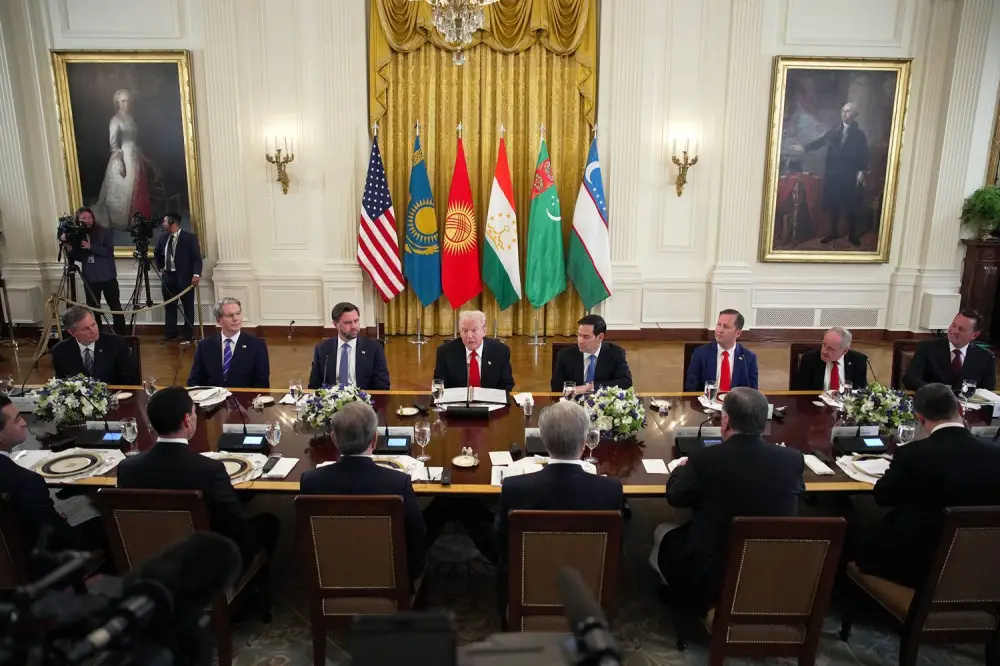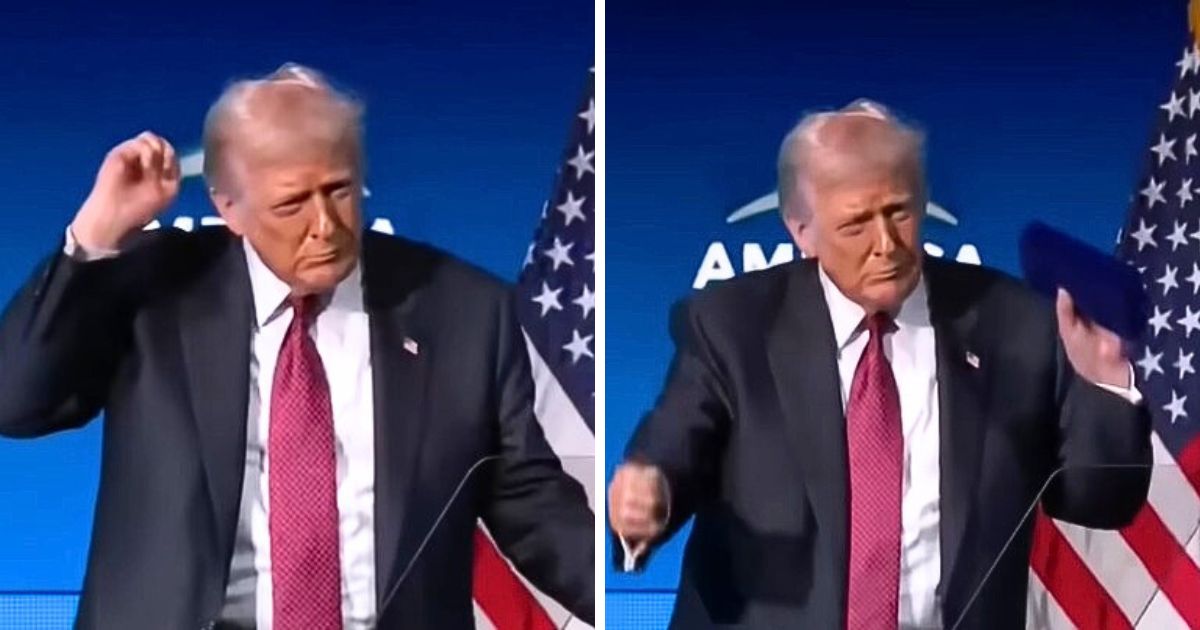Copyright Foreign Policy

Alarmed by the United States’ exposure to China’s rare earths chokehold, the Trump administration is accelerating efforts to identify and plug any of the country’s other potential mineral vulnerabilities. One such target is tungsten. Tungsten may not roll off of the tongue, or sound as alluring as rare earths, but the obscure metal is known for its density and exceptionally high melting point—making it a key component in everything from turbine blades to munitions that can pierce armor. World powers have long clashed over tungsten, also known as wolfram; in World War II, for example, the Allied countries sought to strangle Spanish tungsten flows to Nazi Germany. Today, as with many of the world’s mineral resources, China overwhelmingly commands global tungsten supply chains, accounting for some 80 percent of tungsten concentrate production in 2024, although outside production has climbed. “Tungsten is another one of these tiny—in terms of size—but very critical markets, in particular from a national defense and an aerospace perspective,” said Chris Berry, the president of House Mountain Partners, an independent metals analysis consultancy. Though the United States once produced tungsten, the country hasn’t commercially mined the material in about a decade, according to the U.S. Geological Survey, forcing U.S. firms to instead depend on imports and recycling. That may not have concerned U.S. policymakers a decade or so ago. But as minerals more broadly have become a flash point in recent U.S. trade spats with China, U.S. officials have grown increasingly desperate to diversify away from Beijing and seek new suppliers—including by imposing a 25 percent tariff on tungsten in 2024. China, too, appears to have singled out tungsten as a geopolitical pressure point as it has retaliated against the Trump administration’s trade measures this year. After President Donald Trump unveiled 10 percent tariffs on Chinese imports, Beijing broadly expanded export controls over tungsten and other minerals in February. U.S. manufacturers have felt the financial pressures of China’s curbs, according to Oliver Friesen, the CEO of Guardian Metal Resources, a tungsten exploration and development company with projects in Nevada. “There’s an acute shortage right now, and that’s why we’ve seen the price more than double,” he said. The Trump administration is waging an aggressive campaign to resuscitate domestic mineral production and secure new supply chains globally. In the last few months, minerals have dominated many of the Trump administration’s international deals; domestically, the U.S. leader is increasingly taking equity stakes in private mining firms. Among the U.S. leader’s flurry of efforts, tungsten is increasingly making headlines. Take, for example, Washington’s recent wave of diplomacy with Central Asian leaders. The blitz included the news that U.S. mining investment firm Cove Capital and the government of Kazakhstan have agreed to develop a tungsten mining and processing plant in the latter country, backed by a $1.1 billion capital expenditure. The Trump administration helped negotiate the deal, and according to a document seen by Reuters, the metal from the project will be used “to prioritize U.S. government and American commercial needs.” Yet by eyeing projects in Kazakhstan, the Trump administration may be venturing into relatively unfamiliar territory. “Central Asia is not a straightforward area to do business,” said Gracelin Baskaran, director of the Critical Minerals Security Program at the Center for Strategic and International Studies, a Washington, D.C.-based think tank. “Historically, it is where China and Russia have dominated, not just in the mining, but in the infrastructure.” With this deal, the Trump administration is seeking to bring in both public and private capital, Baskaran added. According to Cove Capital, the U.S. Export-Import Bank has issued a letter of interest for $900 million in financing, while the U.S. International Development Finance Corporation also issued a letter of interest. “These types of deals are messages to the foreign entities of concern—mainly China—that, look, the United States is serious about building supply chains that shift away from China,” said Berry. The Kazakhstan deal is only the latest effort to boost U.S. tungsten supply security. In July, the U.S. Defense Department announced a $6.2 million award to Golden Metal Resources—a subsidiary of Guardian Metal Resources—to advance its Pilot Mountain tungsten project in Nevada. “Tungsten is an essential alloying metal for aerospace, ground vehicles, munitions, and many other defense systems,” Vic Ramdass, acting assistant secretary of defense for industrial base policy, said in a statement announcing the award. “Developing a domestic source for tungsten is one of our top critical and strategic mineral priorities.” Guardian Metal Resources is looking to deliver commercial production from both of its tungsten projects before Trump leaves office, Friesen, the CEO of Guardian Metal Resources, told Foreign Policy. Interest from U.S. lawmakers has also surged. In June, the House Select Committee on China sent a letter to Almonty Industries, a Canada-based global mining company, inquiring about the company’s “intent to support U.S. national security needs” through its tungsten mining project in South Korea. Almonty’s South Korean deposit is one of the world’s biggest tungsten resources, according to the company, and the firm agreed to purchase a tungsten project in Montana in October. Almonty Industries has also announced plans to redomicile from Canada to the United States, which would make the company a “primary U.S.-based producer” of tungsten, the letter noted. “The United States must secure a stable supply of tungsten ore and concentrates along with other minerals critical to U.S. national security,” Republican Rep. John Moolenaar wrote in the letter. “The House Select Committee on the Chinese Communist Party will continue working this term on addressing the emerging national security threats from the PRC’s domination of critical mineral supply chains beginning with Tungsten,” Moolenaar added, using the acronym for the People’s Republic of China. For all of this attention, challenges loom over potential projects in Kazakhstan and in the United States. After all, securing new supply chains isn’t just a question of locating a new resource; it also entails establishing a whole host of processing and manufacturing capabilities. “Generally, mining and processing projects come with a lot of risks that can affect timelines, and in a place like Kazakhstan, there’s also a lot of infrastructure that will need to be built to support this project,” said Baskaran. “It really is dependent on not just capital, but also permitting, technical know-how, infrastructure—but it’s an important first step,” she added. Even with this new push, it will likely take at least several more years for the United States to begin domestic production, experts said. “It will be at least 2030 before I think you would see a realistic domestic tungsten production,” said Berry, “and that would be a very optimistic appraisal.”



